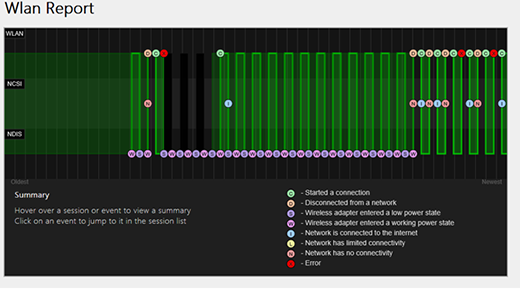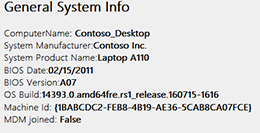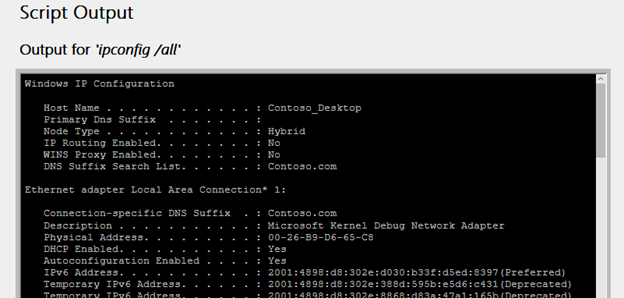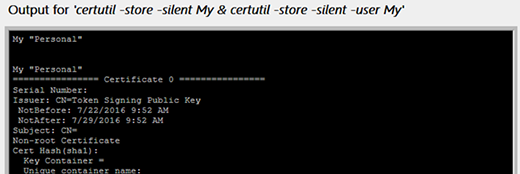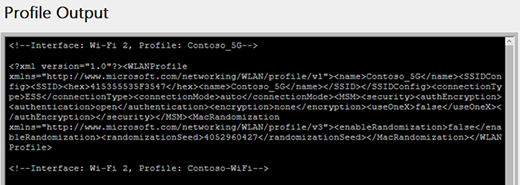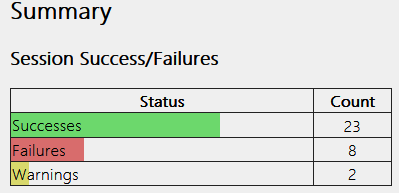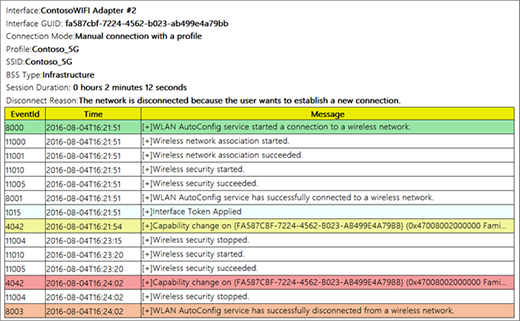Where to find information about WiFi connectivity of the device?
is there a way I can find information about my device’s connectivity to WiFi network? I need information like: what network I’m connected too, what is the mac address of the router, how long have I been connected, when was the initial connection. I tried looking in proc/net , but I didn’t find any useful information there? Is there any other place I can look in?
1 Answer 1
You can use various Wifi/network analysis apps from Play Store to get some of the information you’re looking for. I suggest IP Tools. In its default screen/view, you would get to see following information et al:
- SSID
- Internal IP
- Your Android device’s MAC address
- Gateway
- DNS
- Frequency
- BSSID (your router’s MAC address)
- Lease duration
If you need more information, you’d need to setup adb and issue this command:
It would throw incredible amount of information, most of it incomprehensible for an end-user. However, it would show even such information not available to apps, such as, when was the device last connected or disconnected from a Wi-Fi.
In my Android 8.1.0 (OnePlus 6), I get to see this information et al:
WifiMetrics: mConnectionEvents: startTime=12-23 21:36:05.762, SSID="Connected, no internet", BSSID=ROUTER'S_MAC_ADDRESS, durationMillis=1530, roamType=ROAM_UNRELATED, connectionResult= 1, level2FailureCode=NONE, connectivityLevelFailureCode=NONE, signalStrength=-34, wifiState=WIFI_DISCONNECTED, screenOn=true. mRouterFingerprint: mCo nnectionEvent.roamType=0, mChannelInfo=2412, mDtim=0, mAuthentication=2, mHidden=false, mRouterTechnology=4, mSupportsIpv6=false startTime=12-23 22:32:56.874, SSID="Connected, no internet", BSSID=ROUTER'S_MAC_ADDRESS, durationMillis=1541, roamType=ROAM_UNRELATED, connectionResult= 1, level2FailureCode=NONE, connectivityLevelFailureCode=NONE, signalStrength=-28, wifiState=WIFI_DISCONNECTED, screenOn=true. mRouterFingerprint: mCo nnectionEvent.roamType=0, mChannelInfo=2412, mDtim=0, mAuthentication=2, mHidden=false, mRouterTechnology=4, mSupportsIpv6=false startTime=12-23 22:36:49.886, SSID="Connected, no internet", BSSID=ROUTER'S_MAC_ADDRESS, durationMillis=1542, roamType=ROAM_UNRELATED, connectionResult= 1, level2FailureCode=NONE, connectivityLevelFailureCode=NONE, signalStrength=-28, wifiState=WIFI_DISCONNECTED, screenOn=true. mRouterFingerprint: mCo nnectionEvent.roamType=0, mChannelInfo=2412, mDtim=0, mAuthentication=2, mHidden=false, mRouterTechnology=4, mSupportsIpv6=false
The aforesaid information tells me the last three times (because I restarted my device earlier, so not much of earlier information available) my device connected to a Wi-Fi.
If you look into the log entries under Dump of WifiConnectivityManager you would get to know more info on when the device was disconnected and then connected.
Moreover, the dump output also has all the information I listed above for IP Tools app. It is only a matter of filtering the important information out of that dump.
Analyze the wireless network report
The wireless network report is one of the more useful tools in Windows 10 that can help you diagnose Wi-Fi connection problems.
To create the wireless network report
- In the search box on the taskbar, type Command prompt, press and hold (or right-click) Command prompt, and then select Run as administrator >Yes.
- At the command prompt, type netsh wlan show wlanreport.
The wireless network report contains the following sections:
- Wi-Fi summary chart. This chart shows the Wi-Fi connection sessions that are available in the report. Select a section in the chart to go to the corresponding Wi-Fi session shown in the report. A red circle indicates an error. If you see one, select it to get info about the error.
- Report Info. Shows the date the report was created and how many days it covers.
General System Info. Contains details about your PC. It includes the computer name, system manufacturer, system product name, BIOS date, BIOS version, OS build, Machine ID, and info about if it’s MDM joined.
- Username. Current user signed in to the PC.
- User Domain. The domain the PC is joined to.
- User DNS Domain.
- Device. This is the friendly name of the adapter.
- PnP ID. The PnP ID the PC uses to identify the adapter.
- Guid. The Unique identifier of this adapter on your PC.
- Current driver version. Current driver version the adapter is using.
- Driver date. The date the driver was installed.
- DevNode flags.
- Problem number. If there’s a problem with your adapter, the problem number will be listed here.
Script output
- IPConfig /all. Shows detailed information about the state of the adapters on the system. This includes the physical (MAC) address, IP address, DNS server, if DHCP is enabled, and much more.
NetSh WLAN Show All. Shows detailed information about your Wi-Fi adapter including the adapter’s capabilities, the Wi-Fi profiles on your PC (not including security keys or passwords), and a list of the Wi-Fi networks that were found when you ran the report.
CertUtil -store -silent My & certutil -store -silent -user My. Contains a list of the current certificates on your PC.
Profile Output. A detailed list of all the Wi-Fi profiles stored on your PC. Security keys and passwords are encrypted and aren’t displayed.
Summary
- Session Success/Failures. Summary of the successes, failures, and warnings that are reported for the different Wi-Fi sessions.
- Wireless Sessions. All the Wi-Fi events associated with each Wi-Fi session.
- Interface name. Friendly name for the adapter.
- Interface Guid. Unique identifier for the adapter.
- Connection Mode. How your device connected to the network—Manual, Auto with a profile, and so forth.
- Profile. Profile used in the connection (when a profile is used).
- SSID. The name of the Wi-Fi network.
- BSS Type. Type of network—Infrastructure, Independent (adhoc), or any (either Infrastructure or Adhoc).
- Session Duration. How long the session lasted.
- Disconnection Reason. Reason why you were disconnected.
- Events. All the Wi-Fi events for this session. To get more info about an event, select it. These events are color coded and can help you to diagnose problems. The summary chart has a definition for each of the different colors.
Disconnect Reasons. Lists the different reasons you were disconnected from the Wi-Fi network.
Session Durations. A chart that shows how long each of the following sessions lasted.
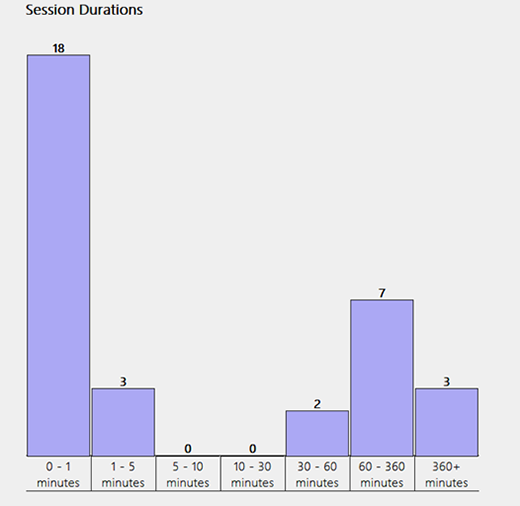
Analyze the wireless network report
The wireless network report is one of the more useful tools in Windows 10 that can help you diagnose Wi-Fi connection problems.
To create the wireless network report
- In the search box on the taskbar, type Command prompt, press and hold (or right-click) Command prompt, and then select Run as administrator >Yes.
- At the command prompt, type netsh wlan show wlanreport.
The wireless network report contains the following sections:
- Wi-Fi summary chart. This chart shows the Wi-Fi connection sessions that are available in the report. Select a section in the chart to go to the corresponding Wi-Fi session shown in the report. A red circle indicates an error. If you see one, select it to get info about the error.
- Report Info. Shows the date the report was created and how many days it covers.
General System Info. Contains details about your PC. It includes the computer name, system manufacturer, system product name, BIOS date, BIOS version, OS build, Machine ID, and info about if it’s MDM joined.
- Username. Current user signed in to the PC.
- User Domain. The domain the PC is joined to.
- User DNS Domain.
- Device. This is the friendly name of the adapter.
- PnP ID. The PnP ID the PC uses to identify the adapter.
- Guid. The Unique identifier of this adapter on your PC.
- Current driver version. Current driver version the adapter is using.
- Driver date. The date the driver was installed.
- DevNode flags.
- Problem number. If there’s a problem with your adapter, the problem number will be listed here.
Script output
- IPConfig /all. Shows detailed information about the state of the adapters on the system. This includes the physical (MAC) address, IP address, DNS server, if DHCP is enabled, and much more.
NetSh WLAN Show All. Shows detailed information about your Wi-Fi adapter including the adapter’s capabilities, the Wi-Fi profiles on your PC (not including security keys or passwords), and a list of the Wi-Fi networks that were found when you ran the report.
CertUtil -store -silent My & certutil -store -silent -user My. Contains a list of the current certificates on your PC.
Profile Output. A detailed list of all the Wi-Fi profiles stored on your PC. Security keys and passwords are encrypted and aren’t displayed.
Summary
- Session Success/Failures. Summary of the successes, failures, and warnings that are reported for the different Wi-Fi sessions.
- Wireless Sessions. All the Wi-Fi events associated with each Wi-Fi session.
- Interface name. Friendly name for the adapter.
- Interface Guid. Unique identifier for the adapter.
- Connection Mode. How your device connected to the network—Manual, Auto with a profile, and so forth.
- Profile. Profile used in the connection (when a profile is used).
- SSID. The name of the Wi-Fi network.
- BSS Type. Type of network—Infrastructure, Independent (adhoc), or any (either Infrastructure or Adhoc).
- Session Duration. How long the session lasted.
- Disconnection Reason. Reason why you were disconnected.
- Events. All the Wi-Fi events for this session. To get more info about an event, select it. These events are color coded and can help you to diagnose problems. The summary chart has a definition for each of the different colors.
Disconnect Reasons. Lists the different reasons you were disconnected from the Wi-Fi network.
Session Durations. A chart that shows how long each of the following sessions lasted.

